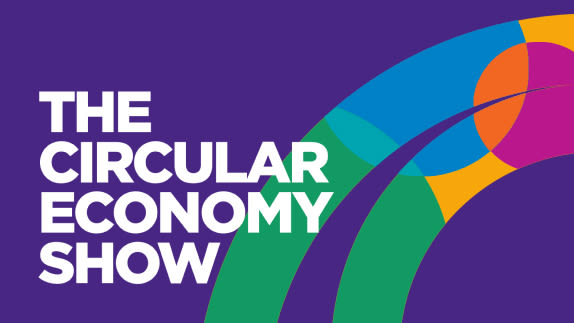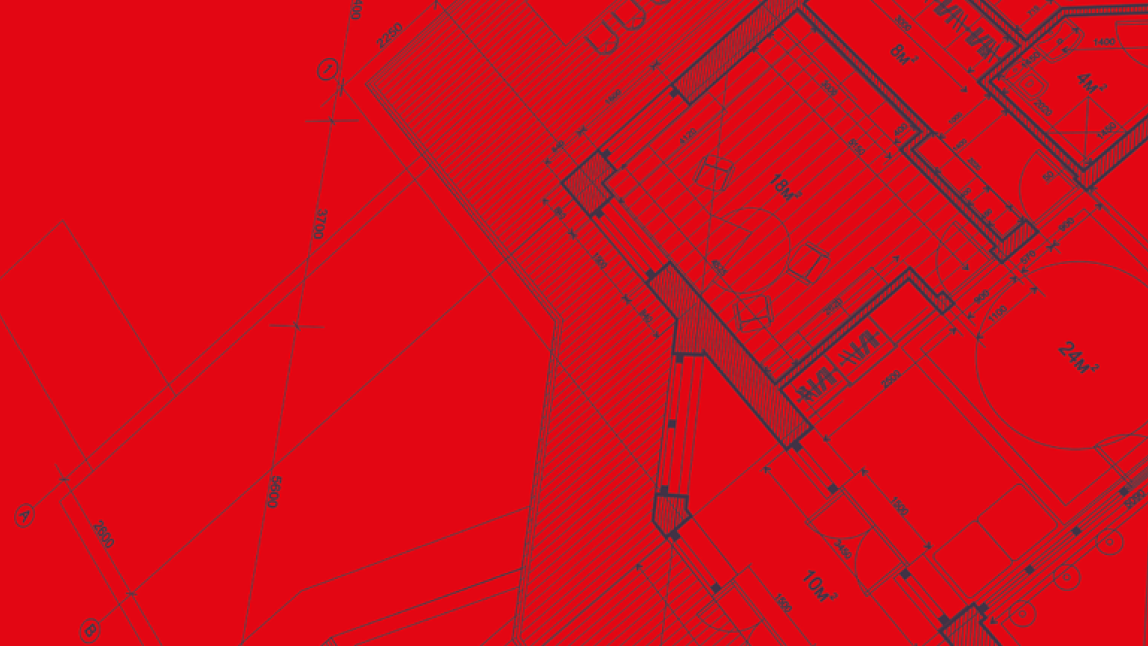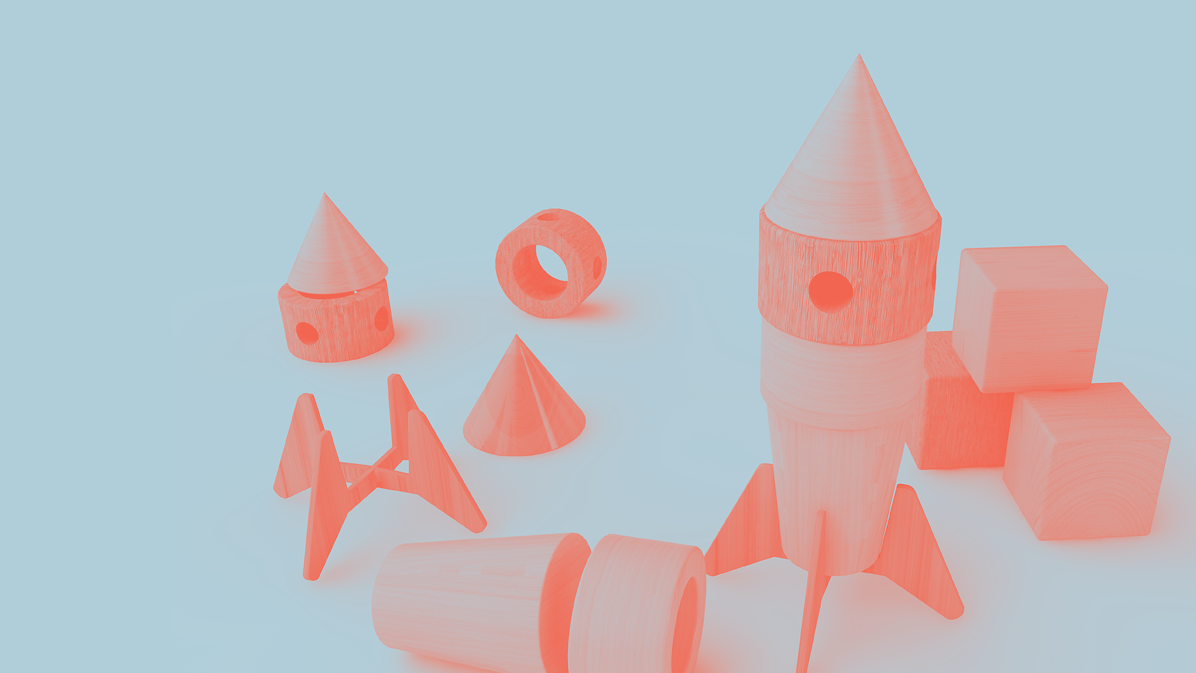The term ‘open source’ is often linked to the development of software. But what about hardware? In the final part of this series, Colin meets two experts working in this space to hear how, much like in the natural world, collaboration can be used to address some of the problems of a linear economy, and help to accelerate a circular one.
Colin is joined by Alastair Parvin from WikiHouse, an online service that provides blueprints of houses for free, and by Pilar Bolumburu from Materiom, a company sharing locally-appropriate material recipes that anyone can use.
If you’ve enjoyed this series, please leave a review as it helps other people find it. We’ll be back with more episodes soon!
Find us on Spotify, Apple Podcasts, or wherever you get your podcasts.
Transcript
[Background noise: birdsong]
Colin Webster 0:06
I'm walking through a forest near my house, I come here most mornings with my dog. And I love it because it's beautiful. It's very peaceful. There's no, no one else around. But of course, there's plenty of life around and I see lots of birch trees. There's lots of leaves on the grounds, lots of other trees I don't know the names of, embarrassingly. And my dog tells me that there's squirrels and rabbits around as well, I never get to see them, but she apparently does. For me, the forest is a lesson in the circular economy in many ways, but in a different kind of way from the way we usually talk about a circular economy. Because often, we talk about circular economy with closed loops. And that is a company makes a product, and the product, or the materials and components, go back to that company, so they can use them again. But in living systems, of course, that's not really how things operate. As I step over some twigs and some leaves, in particular, we know that they will not transform magically back into another tree. But what they will do is add value to the forest system as a whole. So they'll... obviously they'll break down, and they'll add to the regeneration of this area. And if the circular economy is to take inspiration from living systems, then perhaps it needs to take more inspiration from this open source attitude of the forest.
[Theme music 1:28]
Colin 1:33
The term open source is often used in relation to software. It's used to mean the source code is freely available for people to amend and to build upon. And if that sounds a bit fringe to you, then you'd be wrong. All supercomputers run on the open source Linux operating system, as does NASA's operations, the Large Hadron Collider, smart TVs, and most of the internet. So open source is pretty much everywhere in the software world. But what about hardware? How can the principle of open source help materials and information flow in a circular economy? Well, I caught up with Alastair Parvin at WikiHouse. It's an online service that provides blueprints of houses and instructions for essentially printing them a home. In the spirit of open source, all of their designs are free to access. And I wanted to find out more to see how this might fit with a circular economy. So I started by asking Alastair where the idea for WikiHouse came from.
Colin 2:32
Before we go into the detail of hearing more about how WikiHouse operates, could you tell us about where the idea came from?
Alastair Parvin 2:39
Yeah, so I mean, like a lot of things, I think it was, it was the confluence of ideas from several people and from several different angles. So, you know, I'd been, we started it when I was working with Architecture 00. And we're working with a whole bunch of collaborators as well. And, you know, I particularly have been very interested in the housing crisis and the construction and why... not just the housing crisis, in terms of why our homes are so unaffordable, which is actually more to do with land than the houses themselves, but also why it is that in a wealthy country, we actually build such poor quality housing, and why we have made such poor progress in terms of moving towards better-insulated zero carbon and circular buildings. So I was very interested in it from that kind of point of view, really. And, and I think, all of us, and particularly, my colleague, Nick as well, we've been very interested for a long time in what open source was going to mean for architecture and for the built environment. So, you know, since what, you know, we were at university during the, kind of, early 2000s. And so we watched open source software go... really changed the world, right? And completely transform the way that, you know, the software industry worked, and therefore how in the end, how every industry worked. And so we've been really, really interested for a long time in 'Wait a minute, what does that change mean in the way we design buildings?', but it had never really connected through because just publishing drawings, architectural drawings, for example, didn't really... it's not quite the same. And I think the, kind of, key third ingredient that I think catalyse the thing was when, particularly a colleague of ours, Johnny, and they went on to found Opendesk together, but he started experimenting with CNC digital fabrication. And that was the, kind of, 'aha' moment for us because we realised that if you put the thing together, suddenly, you could do something you could never do before, which is you could share building blueprints as code, right? And so the power of open source is that you can take a solution that's got 1000s of hours of other people's knowledge already baked into it, and just copy and paste and just use it, right? And that doesn't work if you just publish, say, blueprints or whatever. It's got to be something that really saves you time. And that was the power of it. When you when you added digital fabrication in the mix, it made this bridge between the world of code and the world of things. And that suddenly allowed us to, kind of, connect the dots.
Colin 5:40
And tell us, for those who maybe don't know, CNC routers, what do they do, and where can people find them?
Alastair Parvin 5:45
So you can find them all sorts of places, actually. So a CNC machine, basically... close your eyes and imagine that a very big printer and a drill had a child. And so essentially, it's strapping a big drill to a printer, and you've got this sort of gantry arm and what you can do is lay down a sheet of material, most commonly plywood. And then it'll, essentially, cut any shape that you like, the gantry will move up and down, it'll cut to extremely high level of precision, any shape you like, out of those panels. So you then essentially got this jigsaw that you can then just slot together. So you get this, sort of... it's why I call them flat pack homes. So we always used to use this wonderful quote, which we think... we attribute to John Maynard Keynes, which is, "it's easier to ship recipes than to ship cakes and biscuits." So the idea that we could develop really fantastic, useful solutions, share them as files, and then effectively you're printing out these components, by cutting them together, and then you can just assemble them and they just slot together. And the fact that they're so precise, then is that thing that kind of lowers the skill barrier, if you like. And you can do this thing of... there's this lovely phrase called poka-yake, which means 'mistake-proofing'. And we're all familiar with this, if you ever plug a plug socket into a wall, you know, you can't put it in the wrong way round, or IKEA, on a good day, is brilliant at this, right? Because you can't... they shaped the components so that you can't assemble them in the wrong way. So we realised we could do a lot of these tricks, basically, so that you could effectively unlock this capacity. And the cool thing is about CNC machines is that, you know, your traditional pre..., you know, offsite manufacturing factory for homes is going to cost you at least 15 million pounds to set up, generally speaking up to sort of, you know, companies have spent 70 to 100 million pounds. Now these things are amazing, these factories, huge us facilities that can turn out, like many, many homes per day. But actually often they run into trouble anyway, because the market doesn't have that level of demand. So we said well, actually, what's cool about a CNC machine is you can buy them for well, you know, even as little as £12,000 or so, there's actually even amateur ones that you can, sort of, kit ones you can make yourself, but actually the kind of like you can get really quite a good performance one for even sort of £25,000 or something like that. So you can set up a micro factory in a garage. And of course, there's loads of them already out there. So almost, you know, all across the UK and Europe and beyond, really, across the world, there are these small workshops with CNC machines and say, "Well hold on a minute, we've got these, sort of, there's a factory already out there in almost every community." When you put it really simply that's our mission with WikiHouse is we want to put the capability to build beautiful zero carbon, circular homes into the hands of literally everybody. We want to we want to try and make it as easy as we can possibly make it, so we can make it so easy that it effectively takes difficulty off the table. You know, we want to move into a world where nobody can say, "Sorry, we can't build zero carbon, you know, circular homes, because it's too difficult." We want to show that it's not too difficult. And we're not there yet, but we're getting there.
Colin 9:12
So as I understand it, you can access your designs online... they're for free. Is that right?
Alastair Parvin 9:14
Absolutely. Yeah.
Colin 9:19
Why don't you charge people to use these?
Alastair Parvin 9:24
Because, to return to the analogy I used before, people don't pay for recipes, they pay for cakes and biscuits. So it's a kind of like, what's really funny is when we said "look, we just published all this stuff open source". Everyone was like, "Oh, this is really this is kind of radical." In the built environment. I would argue that open source isn't that radical. Nobody owns the patent to the brick, right? Or stairs, or screws, and yet try to build a building without any of those things. So there's there's two arguments here which is: one, straightforwardly, we need to transform the way we build in the 21st century really quickly, we need to do it yesterday. So we just want to get if something works, we just want to get it out there and get it into as many people's hands as possible. But the other argument is saying, "Well, you can't make money if stuff is open source." And that just isn't true. Because as I say, people don't pay for recipes, they pay for cakes and biscuits. And this was literally played out.. I don't know if you remember, during COVID, I think it was at KFC, I think, possibly Mr. Kipling? But I think definitely KFC, they published the recipes. And they're making plenty of money now. They're fine. Because actually, it's about having that base of common knowledge. So there's loads of really amazing ideas out there for how to transform construction, but they're being locked behind proprietary walls, essentially behind the capacity of just one company to scale. Whereas what we saw is that when we published those things out there as common knowledge: a, it means they scale much faster, because people just take them on; but b, it means that we immediately recruit... essentially an r&d team of hundreds of people doing all the r&d and the testing for us. And we're not paying them anything, right. So we have all these fantastic contributions coming in from manufacturers, from designers, from engineers, from universities, universities have been amazing. Because students are just like, "Right, oh, I'll test that block or that beam. And I'll do some experimentation. And I'll just share my data back," and then to everybody, everybody then benefits from it. So in a way you can think of it as in the 20th century, you had huge companies, which had their own kind of r&d lab in the background. And in a way we're acting as the r&d lab for 1000s of small companies, if that makes sense.
Colin 11:57
Let's talk about materials. I see from your website, plywood, is the material you recommend. And we know that plywood has some very strong environmental credentials, in terms of long lasting and recyclable. Thinking of the circular economy, do you give specific instructions or advice to users of WikiHouse, about how they can implement circular practices in their building?
Alastair Parvin 12:23
It's definitely a journey rather than a destination. It just happens that right now, in terms of... that plywood is probably the strongest contender. Because it's really light, for its strength-to-weight ratio, is really, really fantastic. It's got quite good environmental credentials, etc. So... and I think the other dimension then in terms of circularity is actually a much more, kind of, high level, which is in the buildings themselves, which is, we want the blocks themselves to be reused. You know, buildings are insane, I think the built environment is the single biggest consumer of raw materials. And it's the single biggest producer of waste. And when you look at most buildings, it's not hard to see why, because we're using loads and loads of wet trades like concrete and blocks and things like that. So first, obviously, switching to timber is a big, big deal, and generally biobased materials, to switching towards a pretty much entirely dry processes on site. So we're not using wet things apart from, like, the paint that you might decorate with, not using wet things on site. So everything can be disassembled, and reused. And that, you know, that in an ideal world that should even include foundations, for example. So the ability to use steel screw pile foundations, obviously, the joy of those being that you can actually unscrew them and remove them at the end of the building's life as well. So we can make some really, really big steps, even if we can't go all the way and right we can make some huge steps forward straightaway now. So our hope is, that actually, you could take the building apart and actually reuse those Lego blocks in a new building as well. That of course, also all depends on the design life of... you know, on the the kind of life of the material itself and that being well looked after. And as you can imagine, the real issue that you start to then hit up against is having kind of hit a lot of those big easy wins early on, the long term big picture is where you start getting into really tricky stuff like making sure that that we can understand... we can trust in the performance and certify those blocks to be reused, etc in future down the line. But the cool news is that, I say, cool and terrible news, is that unfortunately construction today is so bad, that we can make quite a lot of improvements straightaway. Because we're starting from, unfortunately, such a low bar We talk a lot in our... this is from an open systems lab point of view where, you know, our thing is how do you get... how do we build the future system within the existing system, right, in a way that allows the world to transition from one to the other. And, you know, sort of, if we had one thing, sort of, printed on the inside of our eyelids, it would be that Buckminster Fuller quote about if you want to change something, don't fight the existing system, build a new system that makes the old one obsolete, right. And that's sort of, yeah, that's kind of how we go about things. And part of that... we sometimes talk about the things that the innovations that we're working on are deliberately designed to be what are called Trojan horses, but not in the kind of scary virus or full of Greek soldiers sense. But the idea of a thing that works now that contains, if you like, the DNA of the future system and creates space for the future system. So actually, if we can make a product that, right now, is actually cost competitive, significantly better in terms of embodied carbon, in terms of waste, and circularity. And in terms of, you know, being easier to use, etc, etc. It doesn't have to be perfect, provided it then creates this... we containerize the problem and leave space within that problem. And it's fully open source for somebody to come along and say, "Actually, I can make that even better."
[theme music 16:34]
Colin 16:34
Alastair painted an exciting picture of how an industry can be transformed for the better, by the many. For him, open source in the built environment means evolving the designs of others to improve the way we build houses, including, and this is the crucial part from me, planning for now and the future with a circular approach to deconstruction and the repurposing of materials. Right. I'd now like to bring in my next guest, let's talk open source material creation with Pilar Bolumburu from Materiom. This young company was a Google Impact Challenge on Climate winner last year, thanks to their vision for creating locally-appropriate material recipes that anyone could pick up and use. Is this the future of packaging?
Colin 17:17
In a nutshell, what does Materiom do?
Pilar Bolumburu 17:21
So Materiom works, promoting moresi colour on[???] regenerative materials economy where everyone, everywhere can participate. And we do these with open data on artificial intelligence,
Colin 17:40
How do people get involved in making their own materials and making them available?
Pilar Bolumburu 17:46
So nowadays, in the platform, we have people that are material developers, designers, researchers and scientists, so and we're working to bring more SMEs and brands also to the platform. And the way people currently is involving in the platform and making their own biomaterials is first, using the content that is available there, and also... all this community can contribute the recipes that they develop to the website. So for example, now, most of the recipes that are in the platform are not actually developed by the Materiom team are from contributors from around the world. So we do have, like, a diverse set of recipes, thanks to our contributors.
Colin 18:49
You keep saying the word 'recipes' and it conjures up an image of someone in their kitchen. That's not what you mean, surely, is it?
Pilar Bolumburu 18:55
Actually yes. The idea is that biomaterials are more accessible [it shows?] to make it easier to everyone to make them. So our first step is how you can make these in your own home, with your own resources, and the resources you can find locally. So all the recipes that you can find in the platform, now, you can actually make it in your own kitchens, you don't need more than a stove, a pot, a few ingredients and just, like, really basic kitchen tools.
Colin 19:35
Right so if I had a material need, say I had a product to package or whatever, what would drive me toward Materiom and what sort of support would I get there?
Pilar Bolumburu 19:47
So today we're working in these artificial intelligence model that I mentioned before, is that is going to be able to match basically the needs that you have for material, like the properties and the characteristic that you need for a specific application, that is, for example, a stronger material, or more flexible material, that will depend on the application you will use it for. And we'll match that with the database that is in the platform.
Colin 20:21
So, for example, if I had a product that was perishable, if it was exposed to air, you would have examples of materials on there that be useful for my product?
Pilar Bolumburu 20:33
Exactly. So in that case will be you will need something that is, for example, more hydrophobic - not completely because biomaterials is more difficult, that are completely hydrophobic, but they have certain resistance to water, also, it will be important the gas and the moist barriers of the material, so that will be a thing that you could eventually, like, find in the model. But for now, in the first stage, we're focusing more in mechanical properties, that tends to be the one that, especially in the packaging industry, it's more for processing the material. So the strength of the material, the flexibility, etc.
Colin 21:24
And this AI-powered database that matches your needs with biomaterials in your database... people might be listening, wondering 'Well, what about issues of IP?' Why are these materials free to access?
Pilar Bolumburu 21:40
Most of the recipes in our platform, are of course not developed by the Materiom team, but are contributed by a large community of creatives, designers and researchers, that want to share their knowledge. So part of sharing the knowledge is because you want and you want to share these to enable that these materials develop faster. And, of course, many heads thinks better than just one, right? So that's one of the main points of being open source. And of course, we understand that some brands or researchers etc, will not want to share all their research, right? Because there are some restrictions if you want to develop a business, of course. But developing a material is not just about ingredients and their quantities, there's also processing, finishing, applications etc. So we are trying to understand which information, for example, brands, organisations are willing to share, and what not. So for example, they could be open to share the recipes that fail or didn't work for their specific application, but that can work and be useful for someone else. So being, like, open data and successful business are not mutually exclusive. And even more basically, if you share your knowledge with the community, working in the same topics allows you to innovate, like, foster, basically, and also will help you to spot some issues that sometimes are difficult to understand or difficult or maybe like even integrate some feedback on the whole cycle of your biomaterial. So I think that is actually a really good match between both option,s doesn't need to be exclusive.
Colin 23:45
So, why is it important, do you think, that people could make their own materials?
Pilar Bolumburu 23:51
Hmm. So, I think that is key that more people can participate in this next generation of materials, basically, creating biomaterials. Thus, that not only allows for have like more disciplines, working in biomaterials, and understanding all the implications through the whole lifecycle of biomaterial, but also allows you to have a more distributed way of producing, so instead of having one industry that is a big industry that basically is covering the supply chain change for all the world, you have distributed systems that allows that each of those systems actually are more connected with their context and you can have the... they're saying like the sourcing of your material, the production of your material and the use of your material in the same ecosystem.
Colin 25:09
On one hand, you talk about me making materials in my kitchen. And on the other hand, you talk about things happening at great scale, I see that on your website, driving massive market entry. This can't work at scale, surely not, Pilar, come on?
Pilar Bolumburu 25:24
Well, definitely can work in a bigger scale. But in a different way. That idea we have today about scaling up production. So if we want to have a more circular and regenerative production, we can't keep manufacturing the traditional way. So we can't have these linear and highly extractivist way of production, when we are not responsible of what we make. So we want to scale up today, we need to change that mindset. We don't need one industry that provides the whole world. We know how fragile that is, because when that industry is not working, then it interrupts the whole supply chain. So we need a more resilient system that also regenerates our ecosystem. And the way to create these resilient systems aligns with how nature works. So we need to scale up thinking in diverse sources for production and distributed systems. So distributed systems focus in different regions, and how the production, the supply chain, of course, and the consumption are in the same region. And just like nature, we can use diverse natural species that have similar components. And we can extract those from waste, or by-products of other production systems, or even use sustainable methods such as cultivation, harvesting, that not deplete our ecosystem, and that not compete with the food industry. And so there are ways, but it's not going to be... we can of scale and we need to do it, of course. But this doesn't mean that we will create bigger industries. But we will have like a system, a network, maybe, of distributed production in different geographies, fabricating different types of biomass.
Colin 27:28
I'm back in the forest, again, a place where it feels like Pilar took us to. A place where materials exist in abundance, waiting to be utilised by a system that appreciates their use. Every year, we produce about 320 million tonnes of petrochemical plastic. And as we know, some of that has proved to be problematic. But right now, in the forest, I'm surrounded by cellulose, by lignin, by many other materials, all of which are produced in enormous quantities that completely dwarf the production of plastics. And, of course, these materials all add value to the biosphere, and prove extremely useful. If we could harness some of that potential... Well, that's the proposition that Materiom are working on. Thinking further about the conversations I've been holding, it's clear that open source has played a big part in the software world. But Alistair and Pilar both clearly believe it will play a massive part in the hardware world too. And one of the biggest reasons for that, of course, is the existence of the internet. The fact that we can communicate so comfortably in a way we've never been able to do so before. And I think whilst we can all agree there's no silver bullet for creating a circular economy, I think that open source will certainly play a part in that. And why is that? I think it's because open source allows us to harness the minds of so many people around the world who can help us come up with context-specific solutions for the linear problems that surround us.
Colin 29:03
I hope you've enjoyed listening to this. Please click follow our subscribe, so you can follow us on the Circular Economy Show Podcast. Bye for now.





